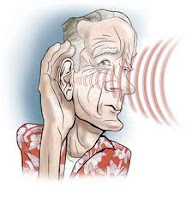Have you ever heard someone say, “I hear better with my glasses on”?
Most people feel they hear better when they can see the person talking. That’s because they’re getting help from lip-reading.
You probably get important help from lip-reading too. Not as in some spy movie, where the hero understands every word from across a room just by watching the person’s lips. Some sounds are impossible to lip-read, so lip-reading when you hear no sound at all is extremely difficult and of limited help.
On the other hand, many speech sounds are easy to lip-read and most lip-reading happens automatically. Fortunately, the sounds that are hardest to hear are easiest to lip-read.
To illustrate: the sounds “th” as in “thin” and “p” as in “pin” are difficult to hear because they are such soft, high-pitched sounds. But with the help of lip-reading, it’s fairly easy to “hear” the difference between “thin” and “pin.”
Vowels are louder and easier to hear – but harder to lip-read. The vowels “o” in “toe” and “e” in “tee” are relatively easy to hear, but it’s difficult to lip-read the difference between the two vowels.
Some sounds are literally impossible to tell apart solely from lip-reading. For example, the sounds “p,b,m” look identical, so you can’t tell the difference in the words “pat, bat, ,mat” from lip-reading alone. With just a little help from hearing, however, it’s much easier to distinguish those words correctly.
Lip-reading tips:
Lip-reading was once taught in special classes as the major source of help for people with hearing loss. Today’s hearing aids have made special training less important, although practice and training can improve your ability to read lips. For most people, the following tips should provide enough help to make lip-reading as helpful as having a third hearing aid.
Make sure you can see the speaker’s face. It’s hard to read lips from another room, from more than 10 feet away, or if the speaker is turned away from you.
Watch the speaker’s face, not just the lips; facial expressions and gestures give important clues.
Make sure there isn’t bright lighting behind the speaker.
Concentrate on sentences and topics rather than individual sounds and words.
Finally, concentrate on how much you understand, not on what you miss.
